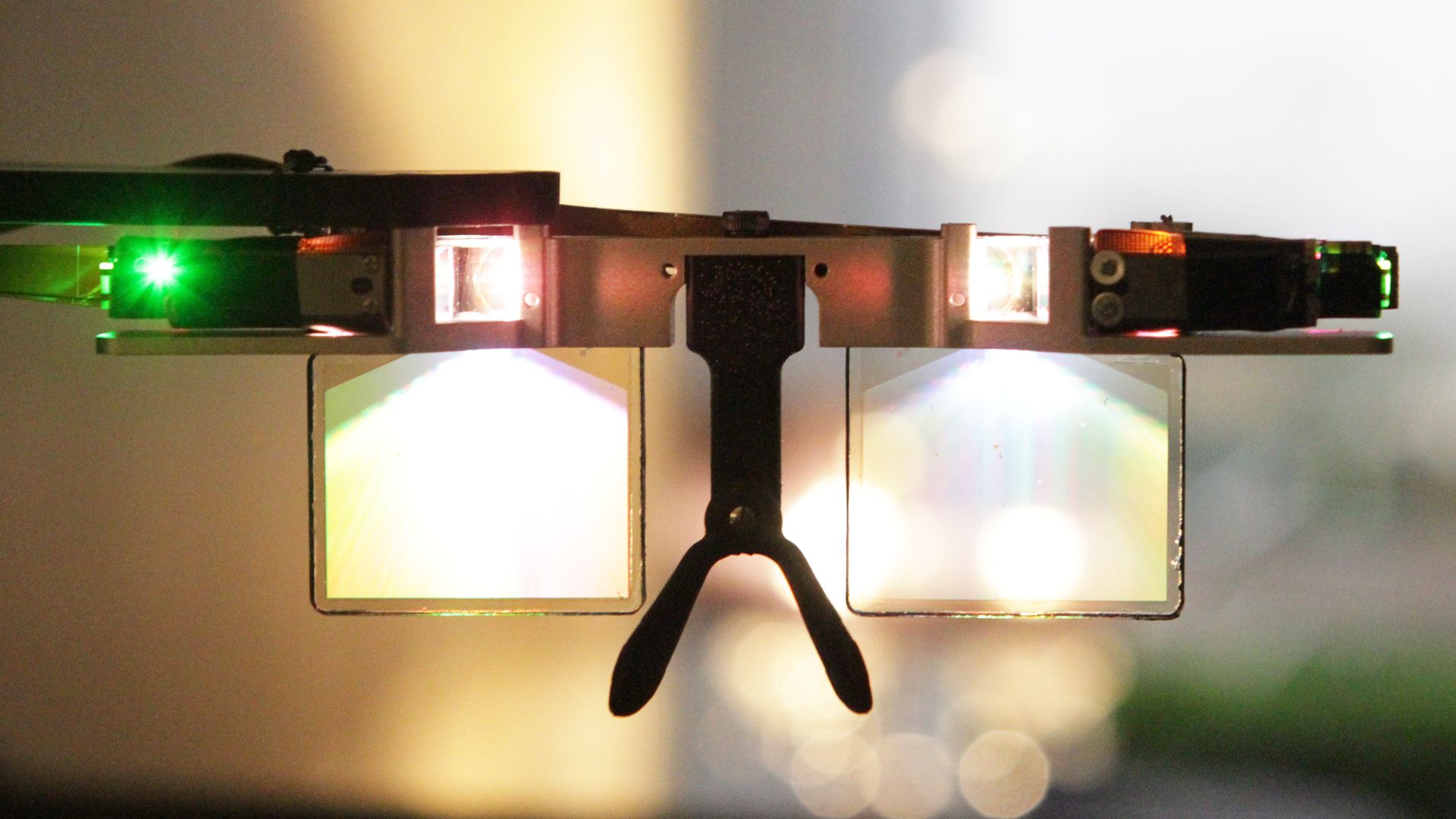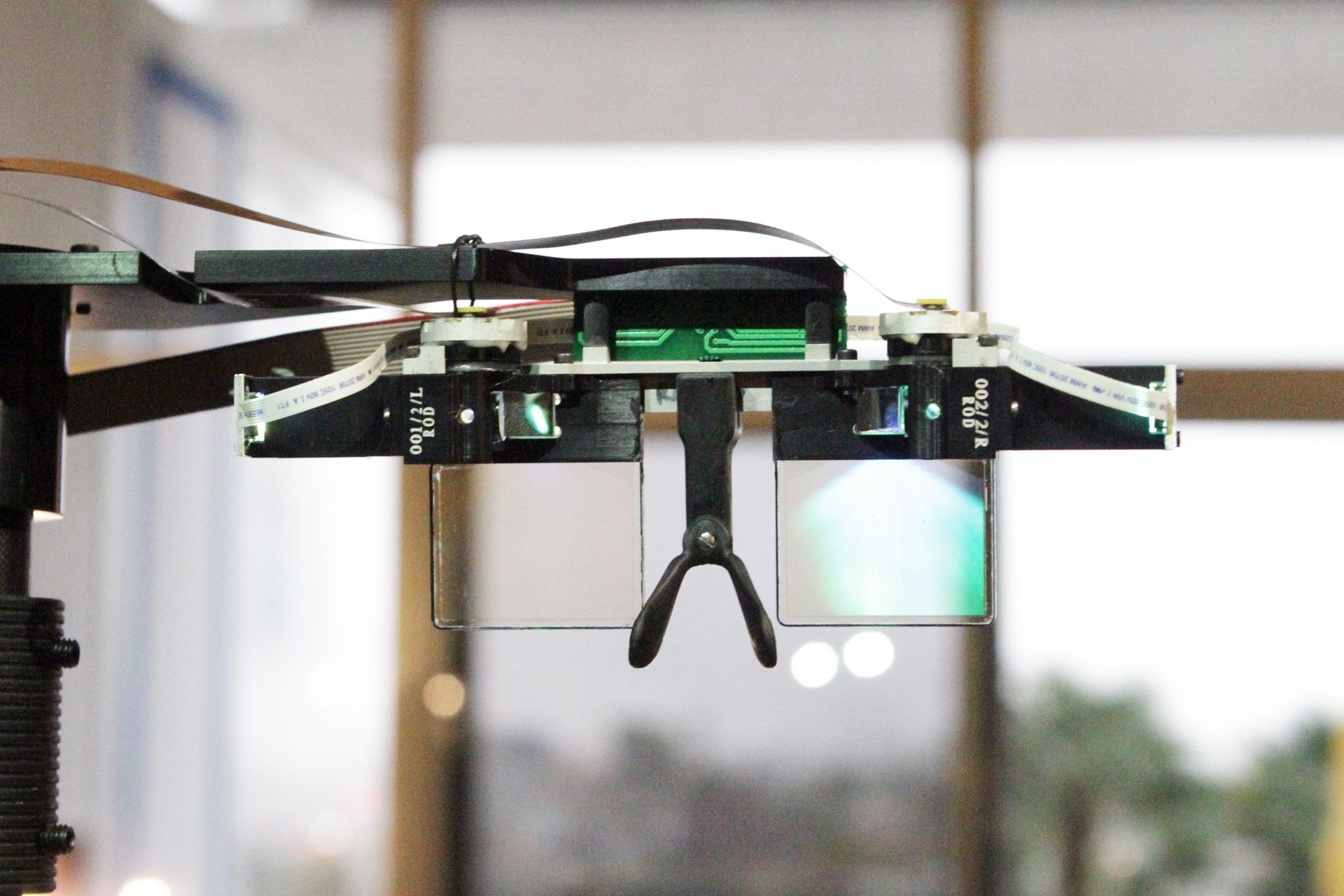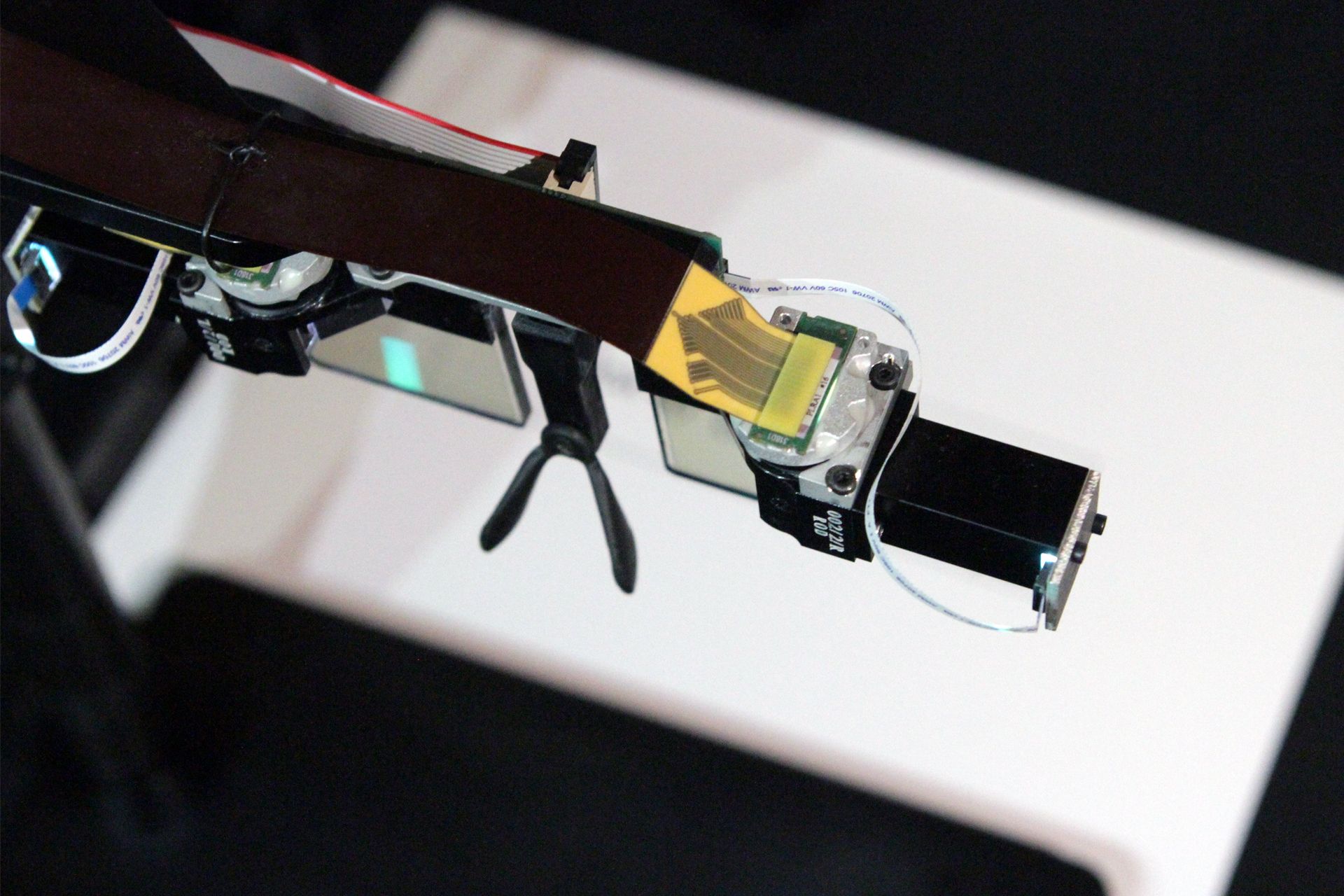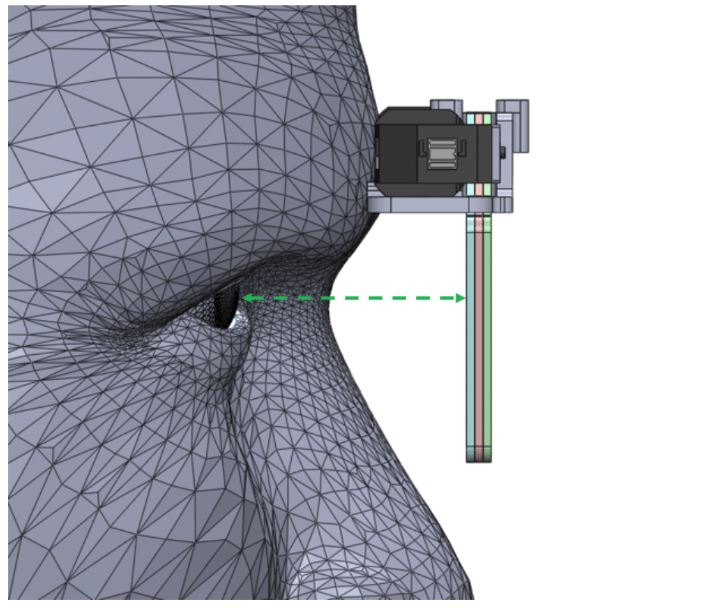New AR Waveguides Promise Smaller Glasses, Better Image Quality
LAS VEGAS, NV -- One of the key technologies that makes augmented and mixed reality work is waveguides, and a company from the UK called WaveOptics is pushing a new family of waveguide modules designed for AR glasses that promise full color, relatively high field of view (FoV), lower cost, and more scalable manufacturing processes. When we met with WaveOptics at CES, reps would not divulge specifics, but did state that the company is working with tier-one customers, which is a coy way of saying that it’s probably in talks with the likes of Apple, Microsoft, and others.
(Psst, What’s A Waveguide?)
Waveguides are key components of AR glasses that--wait for it--guide waves of light from a projector to the glass in front of your eye so you can perceive virtual objects in 3D. It’s one of the core pieces of magic that enable the HoloLens to offer a completely self-contained headset that produces its amazing images on just an Intel Cherry Trail chip.
It’s perhaps instructive to contrast this model to fully occluded VR headsets like the Vive and Rift. When you strap on a VR HMD, you’re essentially putting a small monitor right in front of your face. When you run a VR experience for the headset, all the graphics have to be fully rendered at high resolutions and framerates and produced on that little display. Really, it’s just a small version of what happens between your gaming PC and monitor, but in binocular form and with a pair of lenses between your eyeballs and the display so you can see everything in 3D. This requires tremendous computational resources.
The waveguide model is sort of the opposite. Instead of rendering graphics to a hi-res display, it uses what’s called a light engine to produce a tiny image that’s projected into the waveguide, which then allows you to see the image. Because the rendered image is so small (just as it is on the HoloLens), it requires little in the way of compute resources, which enables lightweight and slim eyeglass-type designs.
Physically speaking, a waveguide is a series of layered panes of glass with microns-thick air gaps between each pane. It resembles a lens from a pair of eyeglasses, but layered. There’s a prism at the top of the glass panes that bends the light from the projector down into the waveguide. There are no active electronics or moving parts in the actual waveguide.
The WaveOptics Phlox Modules
Combined, the light engine, projector, and waveguide form a module. WaveOptics has three variations of its modules (which it dubbed “Phlox”) in various stages of completion. Two offer binocular vision and 40-degree FoV; the other was a monocular prototype that simply showed how WaveOptics is working on achieving 50-55 degrees FoV.
Of the first two, one is the Phlox 40-Degree DMD module, and the other is the Phlox 40-Degree LCoS module. They’re functionally the same in terms of the end result that you can see, even though digital micromirror device (DMD) and liquid crystal on silicon (LCoS) are different display technologies. The former uses a TI display and offers low power requirements (about 0.5W per side); the latter costs less to produce but requires more power. The DMD module is going into production this summer, although our impression is that the LCoS module could be ready to go soon, as well.
Get Tom's Hardware's best news and in-depth reviews, straight to your inbox.









DMD Module
The (monocular) high field of view module doesn’t even have a real name yet; WaveOptics referred to it simply as the “High Field Of View” module. At its CES suite, WaveOptics was showing off a module that could be blue light only; next, they’re going to figure out how to make red light work as well, but first they need to build a “red” waveguide. The company plans to sample system integrators with a full-color, binocular version of the module by the end of 2018.
The two 40-degree FoV Phlox modules are designed to fit over (well, in front of) eyeglasses. There’s no need for IPD adjustment because, WaveOptics said, the eyebox is big enough (19 x 15mm at 25mm eye relief) that it’s not an issue. (IPD is set at 63mm.) They offer a 16:9, 720p image, and depending on the content, they can display 2D or 3D images. They promise a 5m-to--infinity focus range, too.
Expect 200 nit/lumen efficiency (averaged over the FoV), 80% transmittance, and a 50:1 contrast ratio. The actual modules measure 39.1 x 44.1mm, with a 3.1mm thickness, and they weigh 12g. (That’s quite lightweight; for comparison, a moderately “heavy” gaming mouse weighs ten times that.)






LCoS Module
WaveOptics’ Secret Sauce
There are a few aspects of WaveOptics’ designs that the company asserts separate it from the competition, and it all comes from its 2D pupil expansion technology. The “2D” in this case refers to “making the exit zone of the light bigger in both X and Y, which makes it ‘just work’ for users who may have different eye spacings,” stated WaveOptics. This expansion is done in "steps," as the waveguide splits the light into different colors before recoupling them into a visible image. WaveOptics uses two steps; HoloLens, reps said, uses three.








Ostensibly, having fewer steps reduces issues with light scattering and bounce. Basically, when the projected light hits the waveguide, the waveguide splits the light into blue and red (the green light is “shared between red and blue waveguides,” according to WaveOptics’ materials) and reflects it down into the glass panes of the waveguide. Think of a waveguide as a gun barrel; better rifling means the “bullet” (in this case, a beam of light) travels more efficiently and accurately down its path. Effectively, that should produce higher-quality images.
Meanwhile, because there are only two steps instead of three, there’s simply less opportunity for scatter and bounce (one fewer “gun barrels,” as it were), and that, WaveOptics said, makes manufacturing easier (and therefore cheaper), because the tolerances can be looser without losing too much in the way of image quality. The modules are also physically lighter and smaller, then, as well, which enables smaller form factors.
If WaveOptics’ plan continues as it hopes, system integrators will begin building AR glasses with these modules yet this year.
Seth Colaner previously served as News Director at Tom's Hardware. He covered technology news, focusing on keyboards, virtual reality, and wearables.
-
bit_user Reply
Unless you're talking about Hololens' small FoV, the physical size of the projector has no direct impact on the compute resources required. It still has an effective resolution (1268x720 per eye), and that image resolution still takes as much horsepower to render - no matter whether it's being displayed via "light engine" or LCD screen.20637706 said:Because the rendered image is so small (just as it is on the HoloLens), it requires little in the way of compute resources, which enables lightweight and slim eyeglass-type designs.
The story behind Hololens' weak GPU requirements really comes down to the low resolution & quality of graphics you get - more like those of cell phone-based VR than what you see in Rift and Vive games.
MS clearly carried over this experience with lightweight GPUs to enable their PC VR HMDs to have baseline requirements satisfied by typical laptops.
BTW, light field projectors still remain the gold standard in AR display tech. I'm really hoping Magic Leap gets you guys a demo unit, soon. Should be sometime this year, we're lead to believe. -
Kennyy Evony stop hitting roadblocks with miniaturization, make a tent vr small tent sized holodeck that can be easily put together for the gaming sessions and you dont need to put anything on your body, feel comfortable as you are without strapping on anything on to you. keep hardware off your body for full immersion self awareness and ability for additional effects to feed other sensations for additional immersion in real life.Reply -
bit_user Reply
Hey, nothing is stopping you, bro. Sounds like a plan!20649075 said:stop hitting roadblocks with miniaturization, make a tent vr small tent sized holodeck that can be easily put together for the gaming sessions and you dont need to put anything on your body, feel comfortable as you are without strapping on anything on to you. keep hardware off your body for full immersion self awareness and ability for additional effects to feed other sensations for additional immersion in real life.

